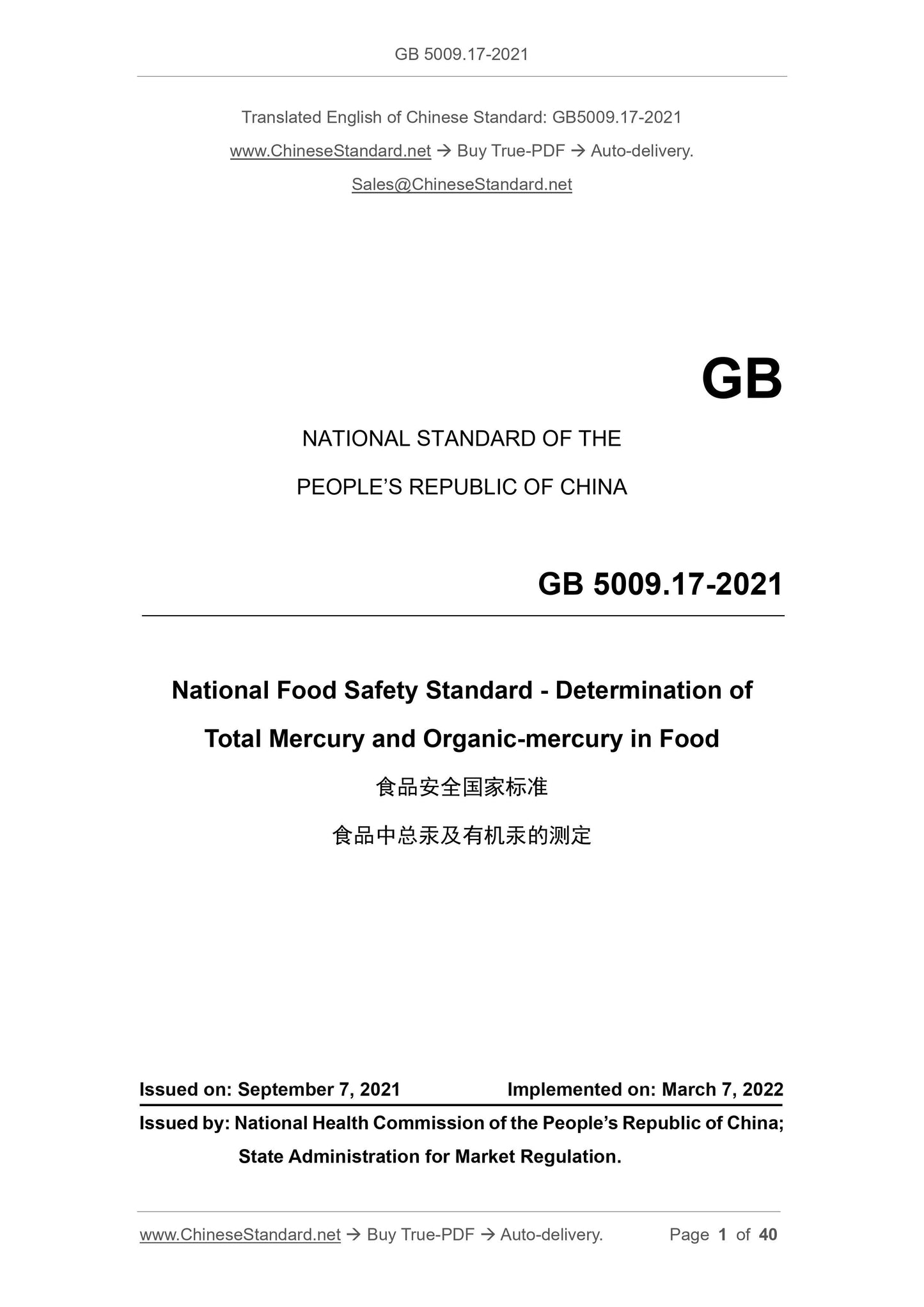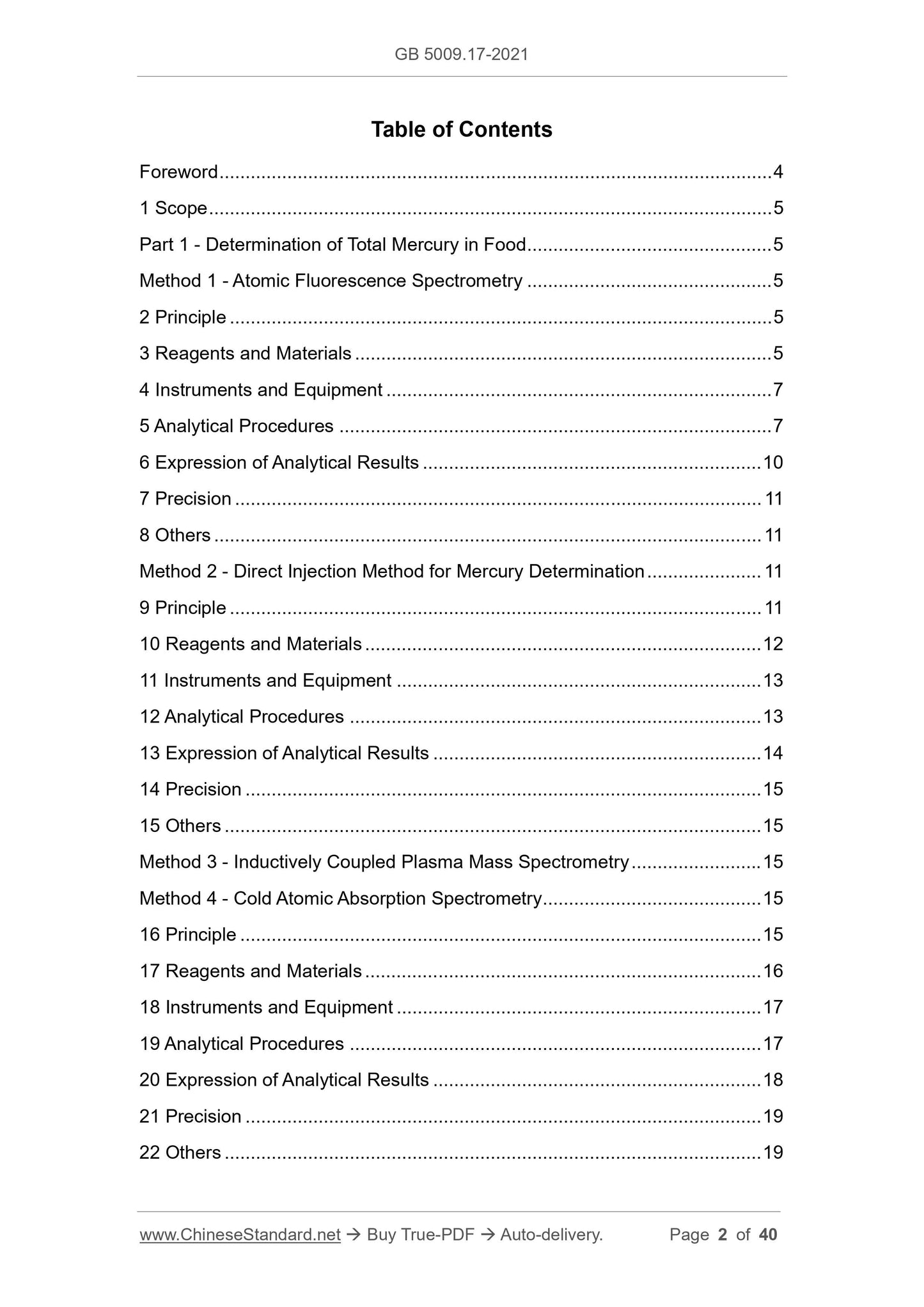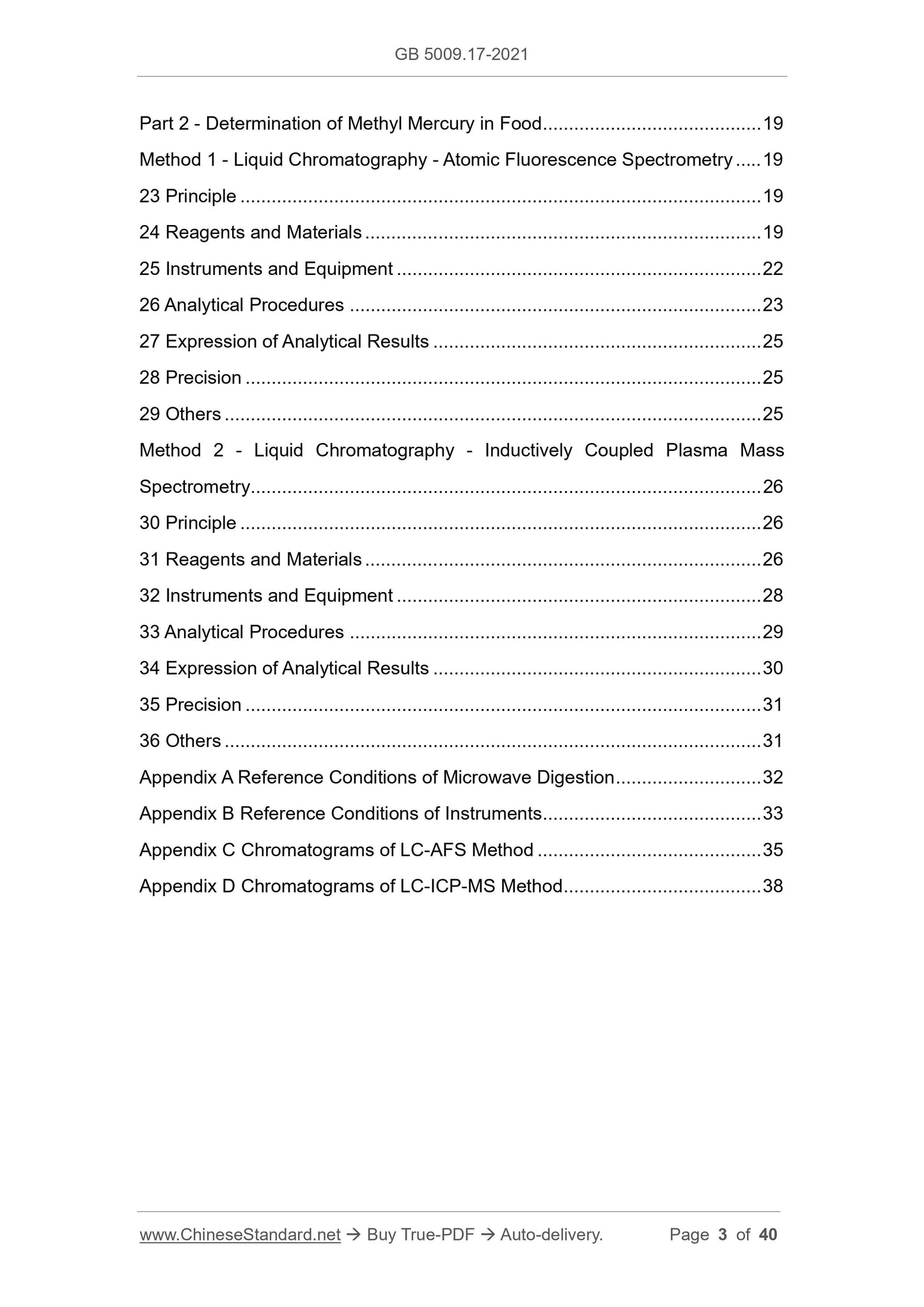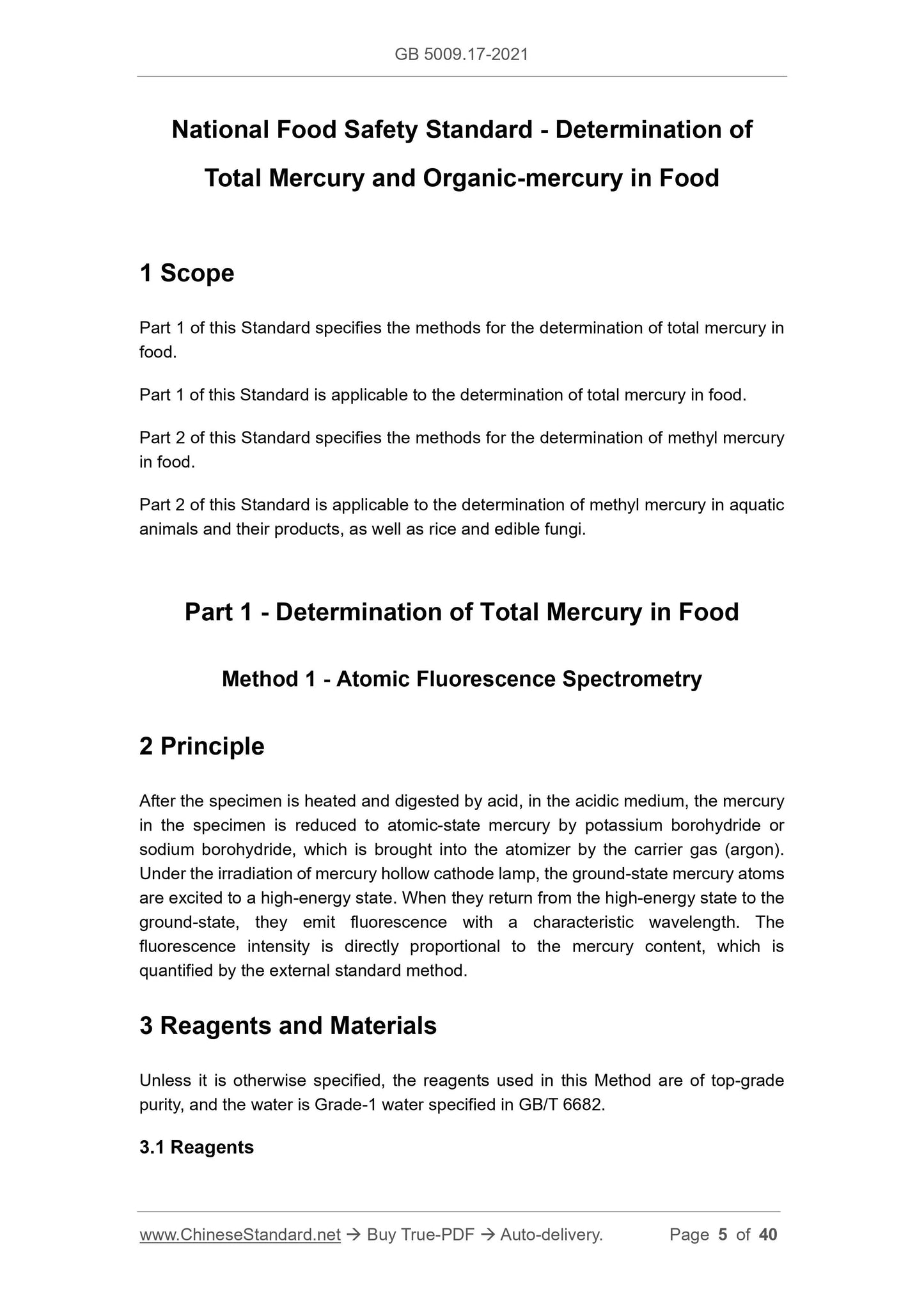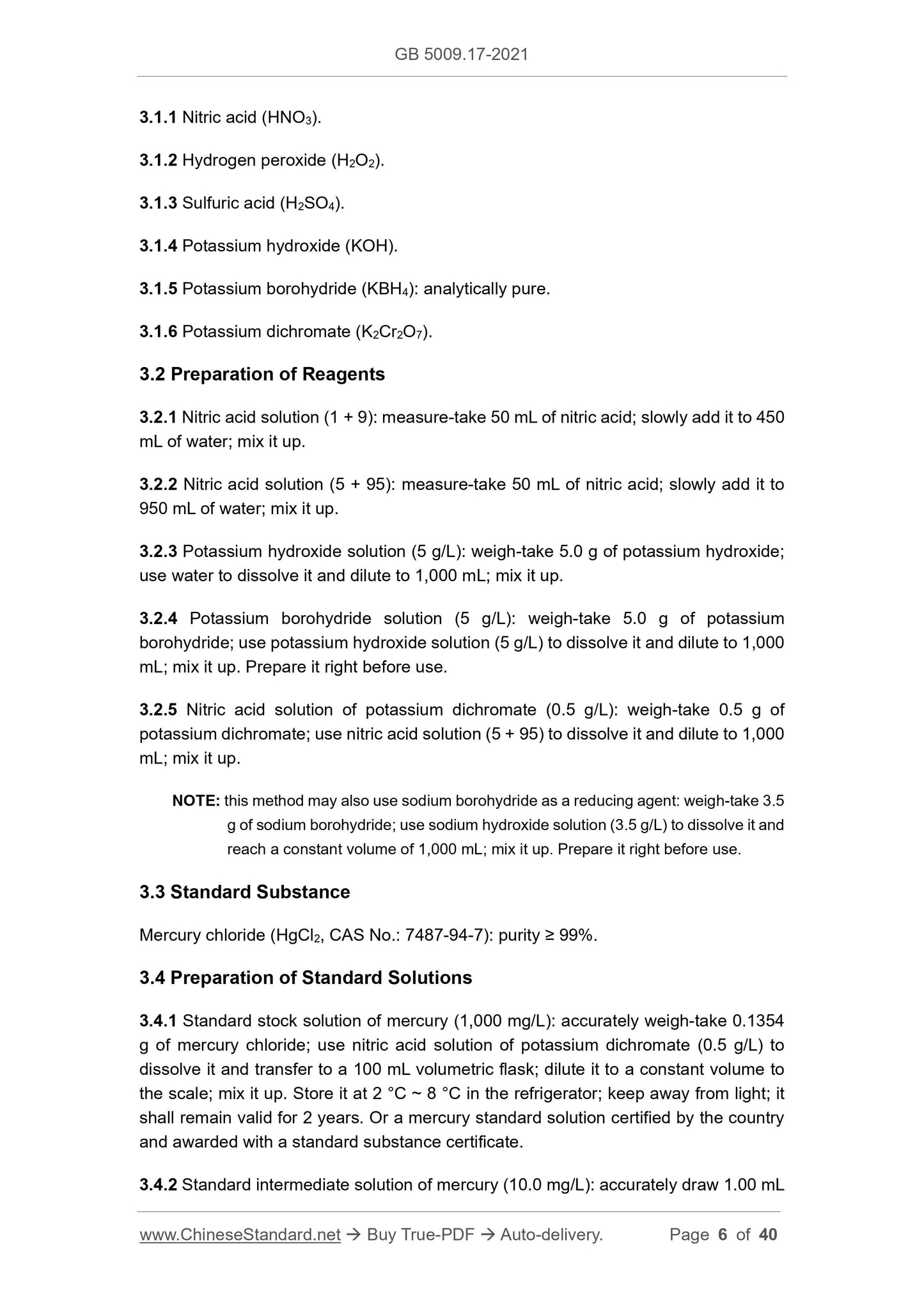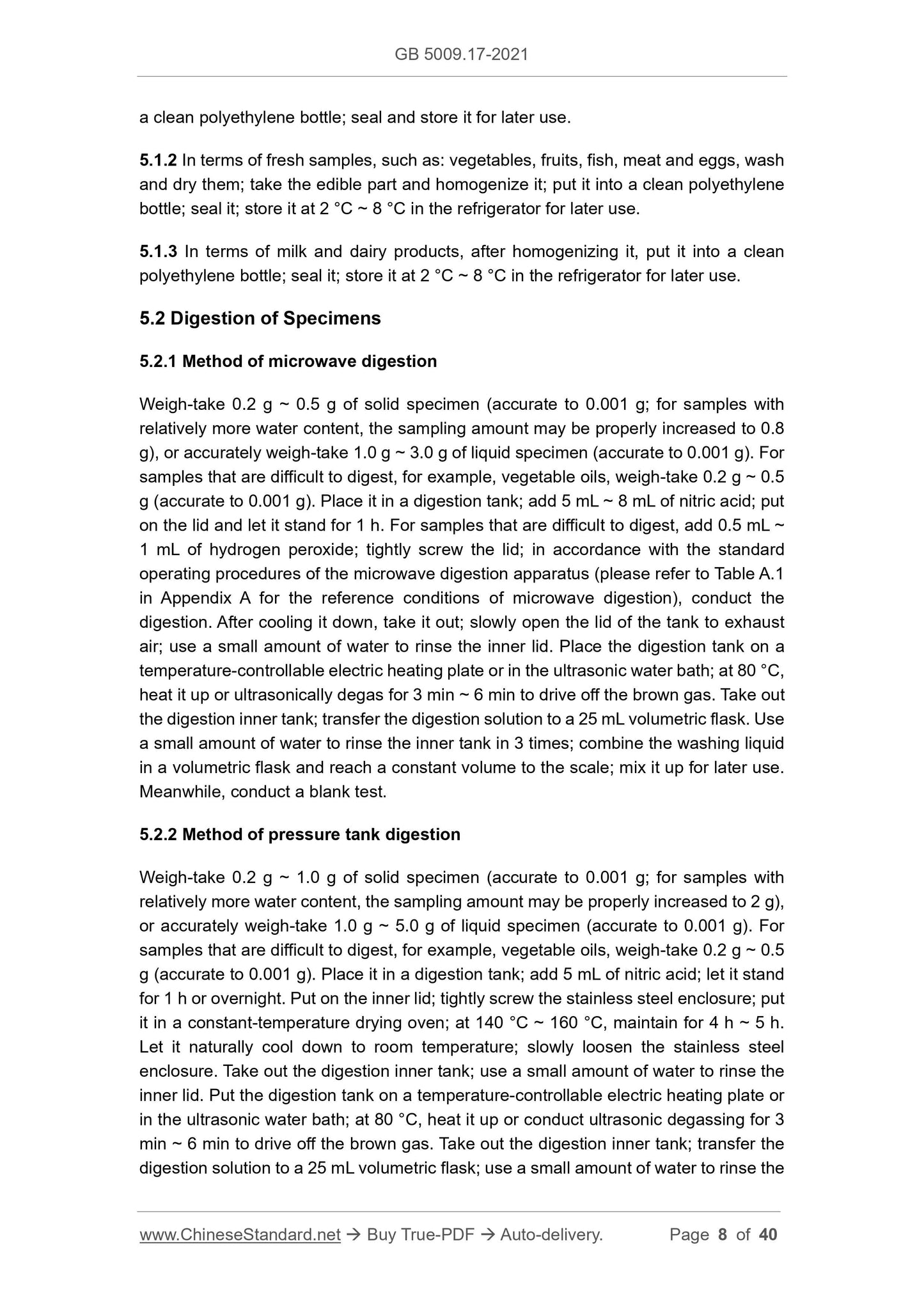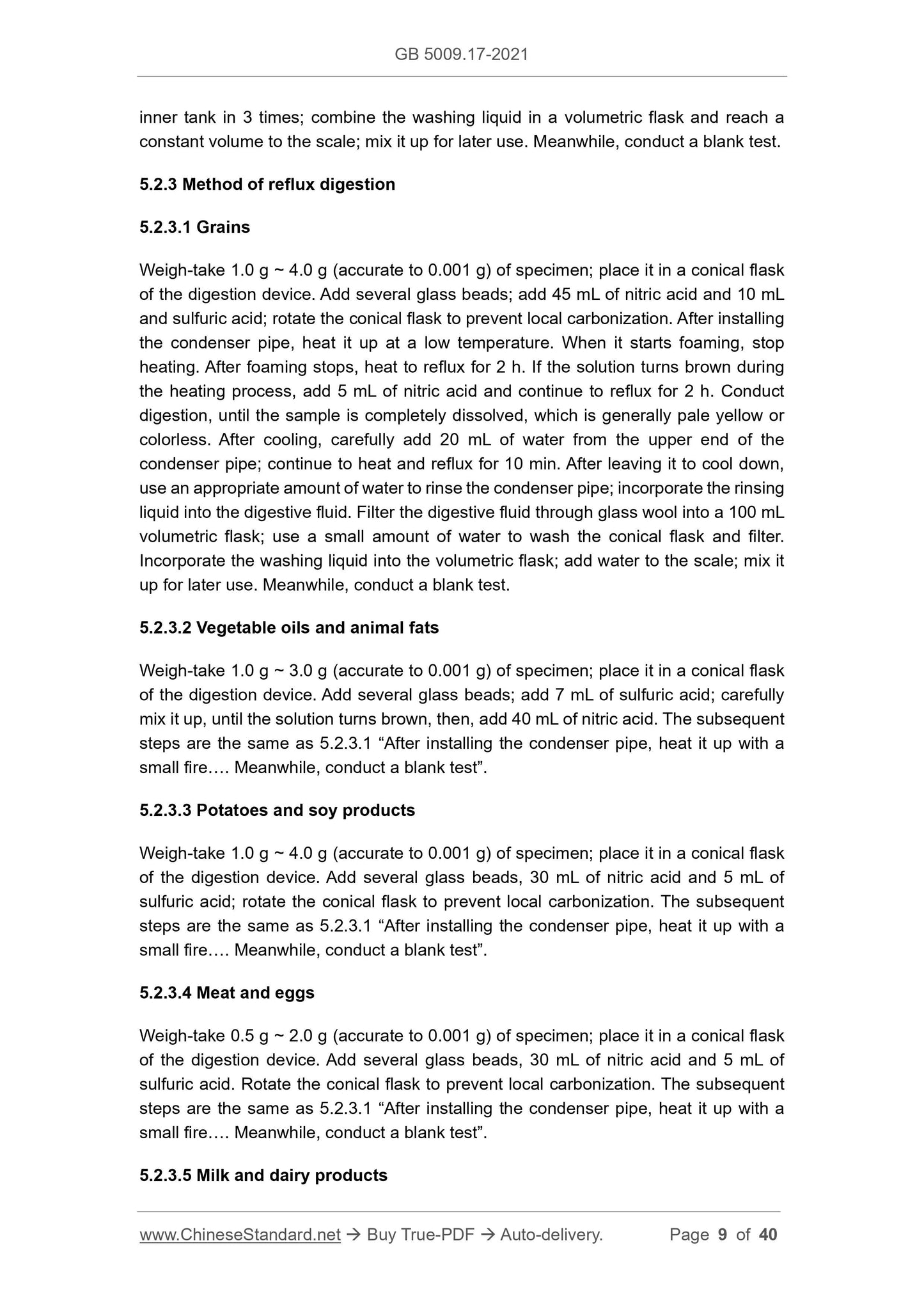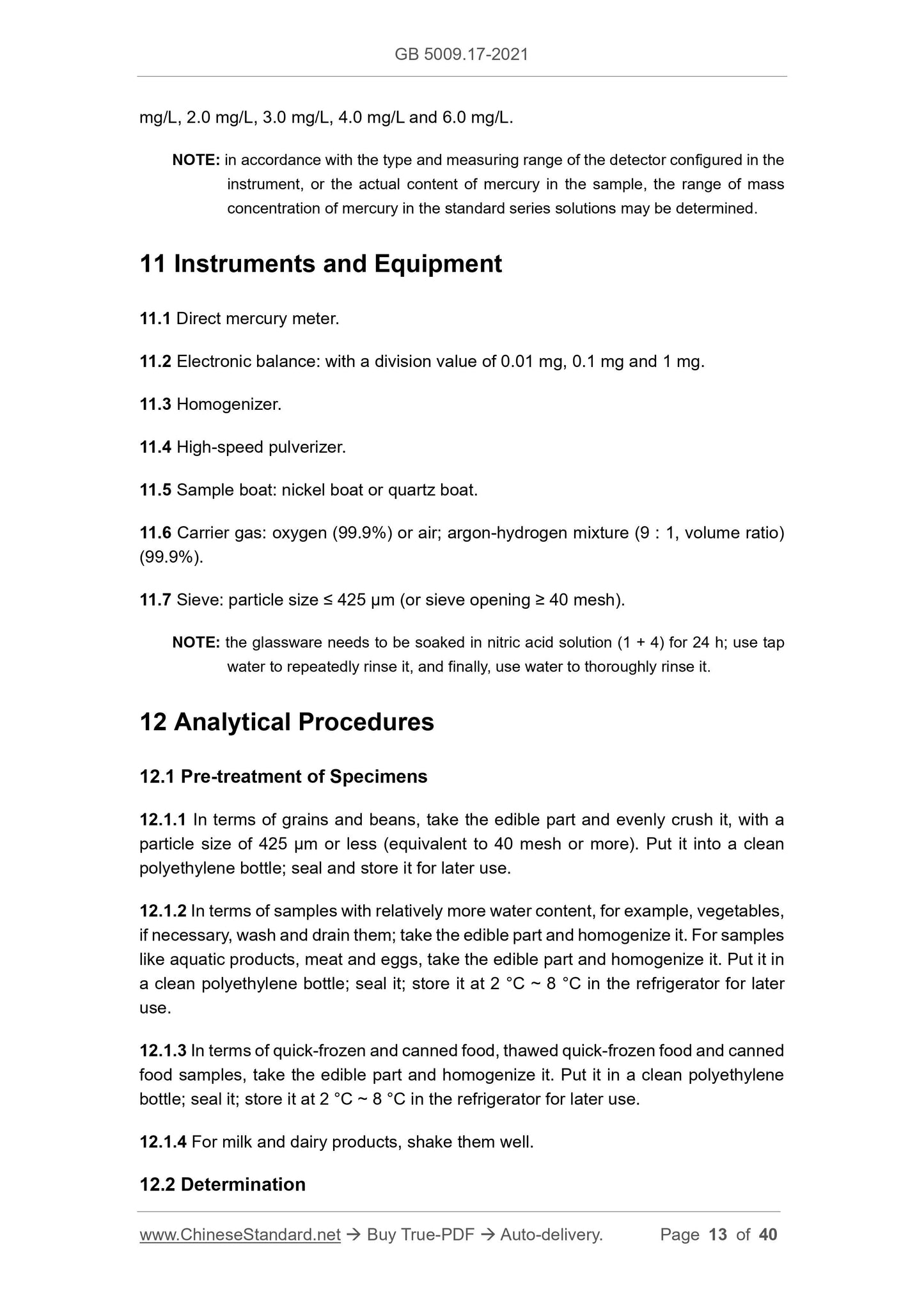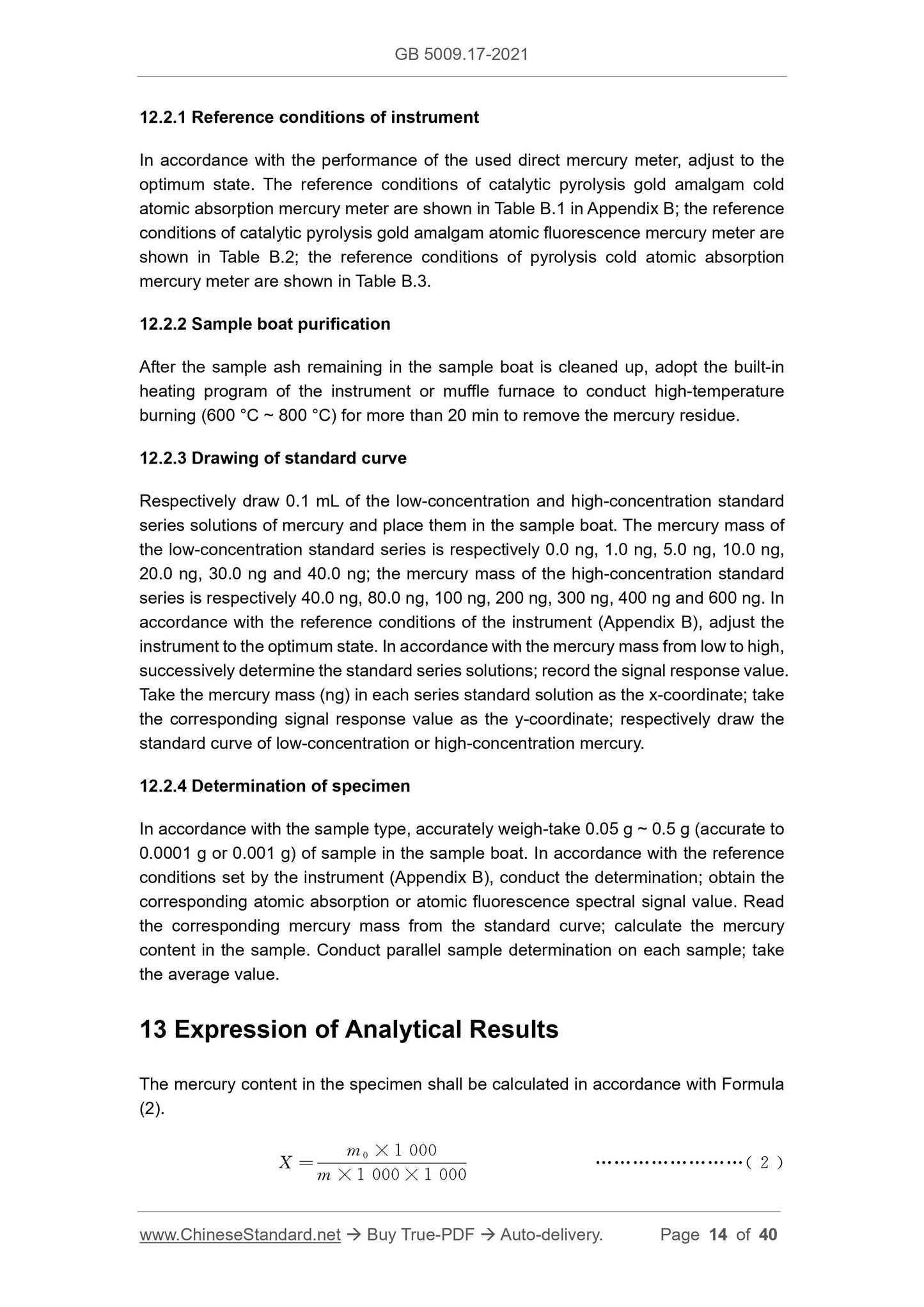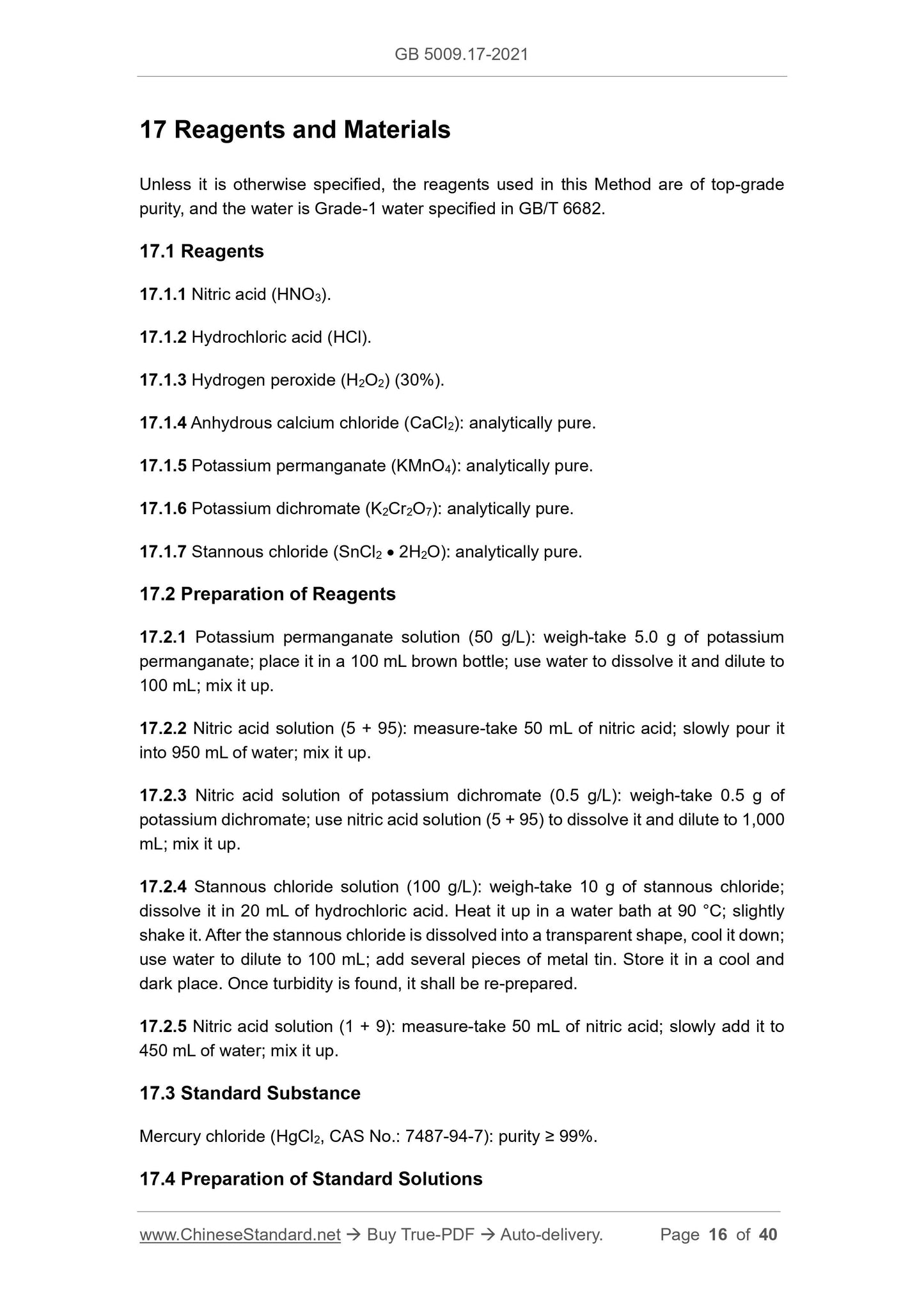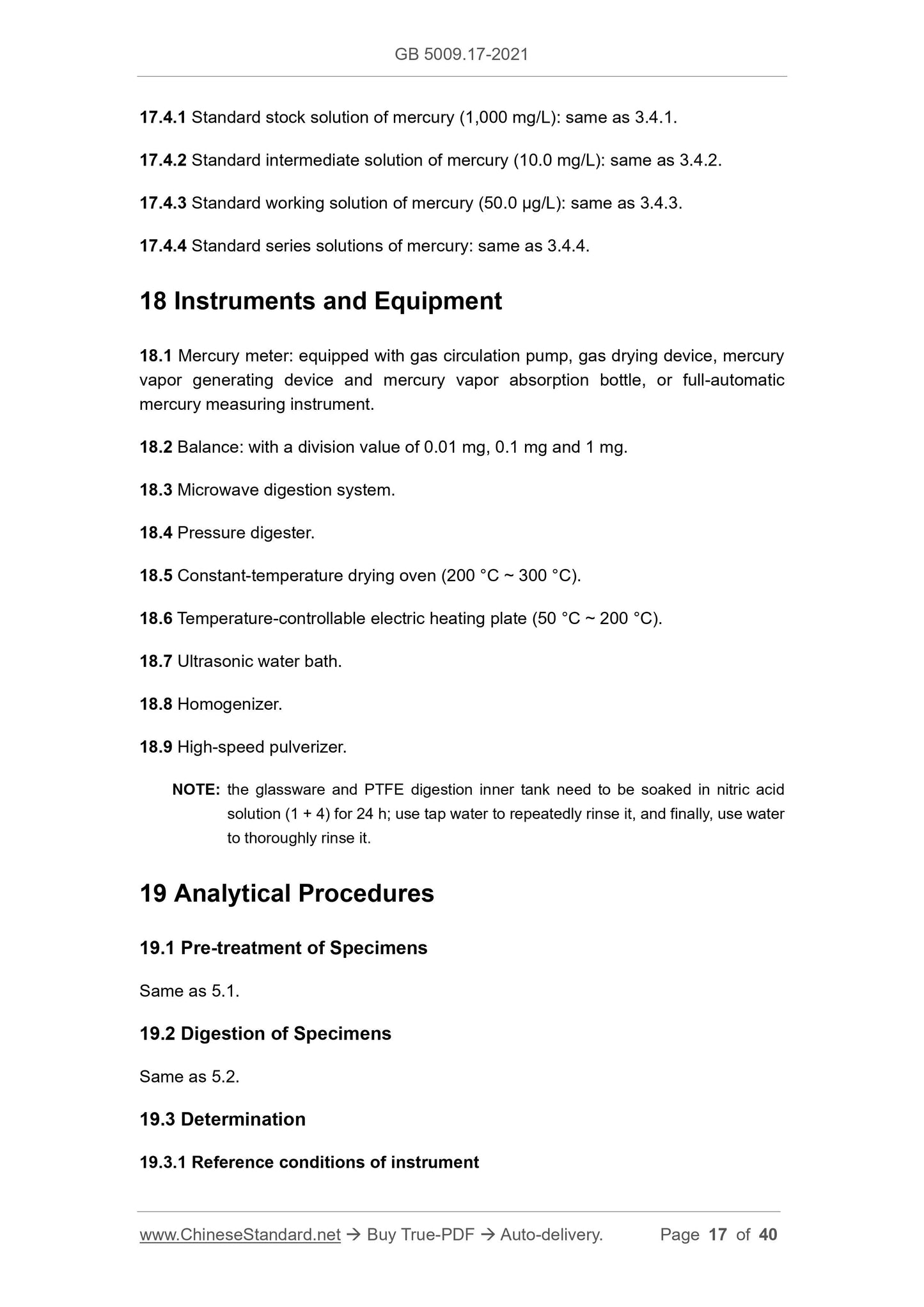1
/
of
11
www.ChineseStandard.us -- Field Test Asia Pte. Ltd.
GB 5009.17-2021 English PDF
GB 5009.17-2021 English PDF
Regular price
$380.00
Regular price
Sale price
$380.00
Unit price
/
per
Shipping calculated at checkout.
Couldn't load pickup availability
GB 5009.17-2021: Determination of total mercury and organic-mercury in foods
Delivery: 9 seconds. Download (and Email) true-PDF + Invoice.Get Quotation: Click GB 5009.17-2021 (Self-service in 1-minute)
Newer / historical versions: GB 5009.17-2021
Preview True-PDF
Scope
Part 1 of this Standard specifies the methods for the determination of total mercury infood.
Part 1 of this Standard is applicable to the determination of total mercury in food.
Part 2 of this Standard specifies the methods for the determination of methyl mercury
in food.
Part 2 of this Standard is applicable to the determination of methyl mercury in aquatic
animals and their products, as well as rice and edible fungi.
Part 1.Determination of Total Mercury in Food
Method 1 -- Atomic Fluorescence Spectrometry
Basic Data
| Standard ID | GB 5009.17-2021 (GB5009.17-2021) |
| Description (Translated English) | Determination of total mercury and organic-mercury in foods |
| Sector / Industry | National Standard |
| Classification of Chinese Standard | X09 |
| Word Count Estimation | 26,224 |
| Issuing agency(ies) | National Health Commission of the People's Republic of China, State Administration for Market Regulation |
Share
